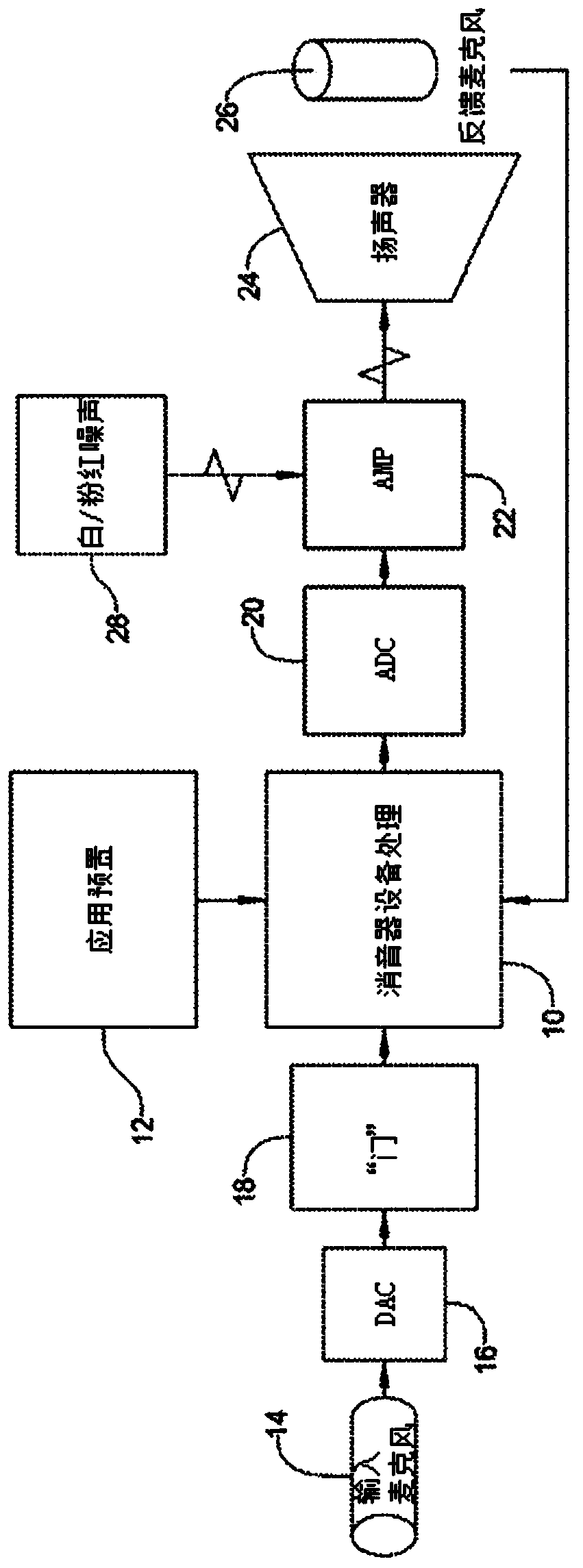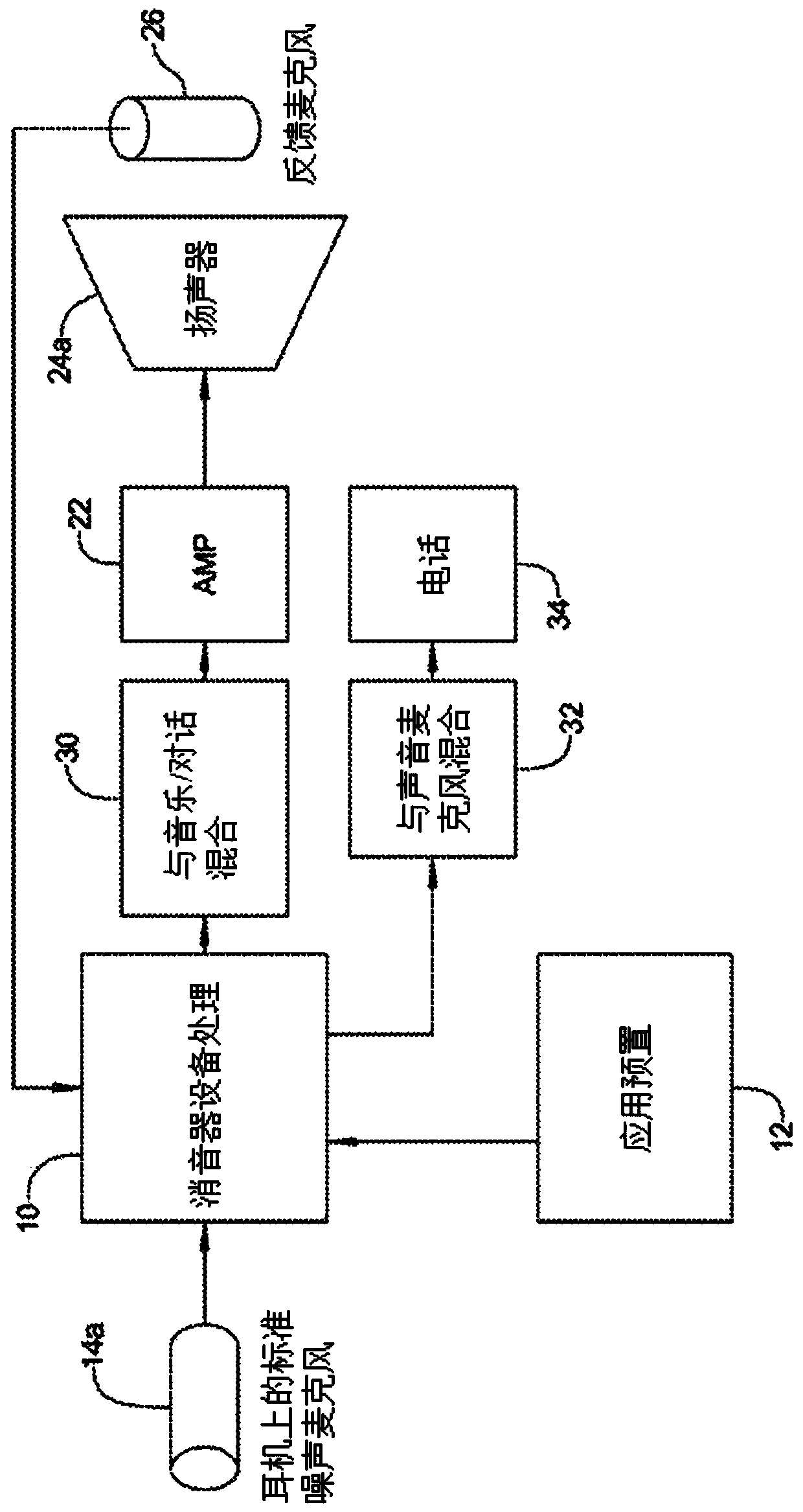Noise cancellation using segmented, frequency-dependent phase cancellation
A noise, anti-noise technology used in the field of electronic and automatic noise cancellation to enhance clarity and reduce processing power and memory
- Summary
- Abstract
- Description
- Claims
- Application Information
AI Technical Summary
Problems solved by technology
Method used
Image
Examples
Embodiment Construction
[0044] Example embodiments will now be described more fully with reference to the accompanying drawings.
[0045]The disclosed muffler devices can be deployed in a variety of different applications. For purposes of illustration, five exemplary embodiments will be discussed in detail herein. It should be appreciated that these examples provide an understanding of some of the different uses for muffler devices. Other uses and other applications are also possible within the scope of the appended claims.
[0046] refer to figure 1 , showing a first exemplary embodiment of a muffler device. This embodiment is designed to provide noise cancellation for an in-air system where incoming ambient noise is sensed and a noise cancellation signal is generated and broadcast to the surrounding area. As shown, this embodiment includes a digital signal processor circuit 10 with an associated memory 12 in which configuration data, referred to herein as application presets, is stored. The d...
PUM
 Login to View More
Login to View More Abstract
Description
Claims
Application Information
 Login to View More
Login to View More - R&D
- Intellectual Property
- Life Sciences
- Materials
- Tech Scout
- Unparalleled Data Quality
- Higher Quality Content
- 60% Fewer Hallucinations
Browse by: Latest US Patents, China's latest patents, Technical Efficacy Thesaurus, Application Domain, Technology Topic, Popular Technical Reports.
© 2025 PatSnap. All rights reserved.Legal|Privacy policy|Modern Slavery Act Transparency Statement|Sitemap|About US| Contact US: help@patsnap.com



